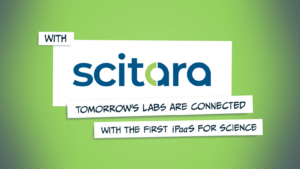In today’s rapidly evolving scientific landscape, laboratories are facing increasing pressure to streamline their operations, enhance efficiency, and ensure data integrity. This necessitates the adoption of innovative solutions that can seamlessly integrate disparate systems, automate workflows, and facilitate effective collaboration. One such solution gaining significant traction is iPaaS (Integration Platform as a Service). In this blog, we will explore why iPaaS has become essential for today’s labs and how it revolutionizes laboratory processes.
1. Unifying Disparate Systems:
Modern laboratories often rely on a multitude of systems, including laboratory information management systems (LIMS), electronic laboratory notebooks (ELNs), instrument software, data analysis tools, and more. These systems often operate in isolation, leading to data silos and inefficiencies. iPaaS acts as a unifying force, integrating these disparate systems into a cohesive ecosystem. It enables seamless data flow, eliminates manual data entry, and ensures real-time access to critical information across the laboratory.
2. Workflow Automation:
Laboratories deal with a myriad of repetitive and time-consuming tasks that hinder productivity and introduce the risk of human errors. iPaaS offers automation capabilities that streamline laboratory workflows. By automating routine processes such as data transfer, result calculations, and report generation, iPaaS reduces manual intervention, accelerates turnaround times, and frees up scientists to focus on more valuable, intellectually stimulating tasks. This leads to increased efficiency and improved overall productivity within the lab.
3. Enhanced Data Integrity:
Maintaining data integrity is paramount in scientific research. iPaaS plays a vital role in ensuring the integrity of laboratory data by minimizing the risk of transcription errors and data inconsistencies. Through seamless integration and automated data transfer, iPaaS eliminates the need for manual data handling and transcription, reducing the likelihood of mistakes. It establishes a robust data management framework, improving accuracy, traceability, and compliance with regulatory requirements.
4. Collaborative Science:
Scientific research often involves collaboration between different teams, departments, and even external partners. iPaaS enables seamless data exchange and collaboration across these entities. It provides a secure and scalable platform for sharing data, protocols, and results, fostering interdisciplinary collaboration and accelerating scientific discovery. Researchers can easily collaborate, communicate, and access shared resources, enhancing the efficiency and effectiveness of collaborative efforts.
5. Scalability and Flexibility:
iPaaS offers scalability and flexibility, allowing laboratories to adapt and evolve as their needs change. It can accommodate the integration of new instruments, software, and technologies, ensuring compatibility and seamless data flow. iPaaS also enables laboratories to scale their operations without the need for extensive infrastructure investments. Whether expanding the scope of research, onboarding new team members, or integrating advanced analytics tools, iPaaS provides the necessary agility to meet evolving demands.
Conclusion:
In today’s fast-paced and data-driven scientific landscape, iPaaS has emerged as an indispensable tool for laboratories. Its ability to integrate systems, automate workflows, ensure data integrity, facilitate collaboration, and provide scalability is revolutionizing laboratory operations. By adopting iPaaS solutions, laboratories can optimize their processes, improve efficiency, and accelerate scientific discoveries. As technology continues to advance, iPaaS will remain an essential component for labs seeking to stay at the forefront of scientific innovation.
Learn more about Scitara’s iPaaS for Science and its applications.
